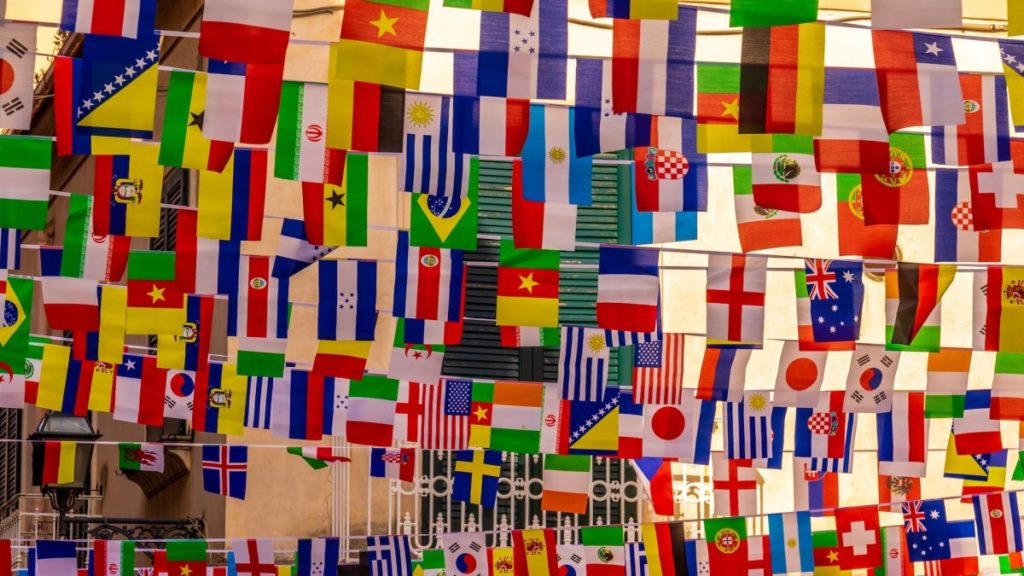
HYPERVSN 3D Catalog
USD 1,200
Qty

HYPERVSN 3D Catalog
USD 1,200
Qty

HYPERVSN 3D Catalog
USD 1,200
Qty
Cart Subtotal:
USD 3,600

HYPERVSN
Marketing Department
Marketing in different countries requires a nuanced approach that considers cultural sensitivities, language variations, diverse consumer behaviours, legal and regulatory differences, economic conditions and the intricacies of distribution and supply chain networks. Successful international marketing involves adapting strategies to align with each unique market, ensuring messages resonate with local audiences and addressing the specific challenges and opportunities presented by the global marketplace.
Marketing is a dynamic field that requires adaptation to diverse cultures, languages and consumer behaviours worldwide. While the core principles of marketing remain consistent, there are significant differences in how marketing strategies are implemented in different countries.
Cultural nuances significantly impact marketing strategies. What may be well-received in one country can be offensive or irrelevant in another. Brands must navigate these sensitivities to avoid misunderstandings or backlash.
Example. McDonald’s, known for its beef burgers, successfully adapted its menu in India by introducing a range of vegetarian options, considering India’s large vegetarian population and cultural preferences.
Language is a fundamental aspect of communication. Effective marketing requires translation, localisation and understanding the linguistic nuances of a target market to convey messages accurately.
Example. Coca-Cola’s “Share a Coke” campaign involved printing names on its bottles, fostering a sense of personalisation. In China, where characters represent names, Coca-Cola adapted by printing popular Chinese nicknames, resonating with local consumers.
Consumer behaviour varies from one country to another due to cultural, economic, and social factors. Marketers must conduct thorough research to understand these behaviours and tailor their strategies accordingly.
Example. IKEA’s approach differs in Japan, where smaller living spaces necessitate space-saving solutions. IKEA adapted its product offerings and marketing materials to cater to the Japanese preference for functionality in compact homes.
Each country has unique regulations and legal requirements for advertising, labelling and product claims. Marketers must adhere to these guidelines to avoid legal issues.
Example. Alcohol advertising regulations vary widely. Brands like Heineken adjust their marketing strategies to comply with strict regulations in some countries while using creative advertising in others.
Economic conditions, including income levels and purchasing power, directly affect marketing strategies. Price sensitivity and consumer spending habits vary across countries.
Example. Luxury brands like Louis Vuitton adapt their pricing strategies based on local economic conditions. They may offer different price points in emerging markets compared to established ones.
Logistics and supply chain challenges differ by country, impacting product availability and distribution. Marketers must consider these factors to ensure products reach consumers efficiently.
Example. Amazon, known for its efficient logistics, has tailored its supply chain strategies in India to accommodate diverse transportation infrastructures and regional disparities.
In the globalised world of business, international marketing is a complex endeavour. Success requires a deep understanding of cultural sensitivities, effective communication in local languages, recognition of diverse consumer behaviours, adherence to legal regulations, adaptation to economic conditions and the ability to navigate intricate distribution networks. While international marketing presents its challenges, it also offers opportunities for brands to connect with diverse audiences and expand their global presence. To thrive in the global marketplace, marketers must embrace these differences and craft strategies that resonate with each unique market they enter.




subscribe

USD 1,200
Qty

USD 1,200
Qty

USD 1,200
Qty
Cart Subtotal:
USD 3,600☎️